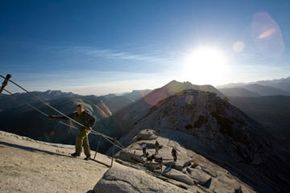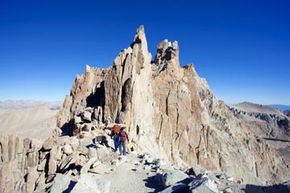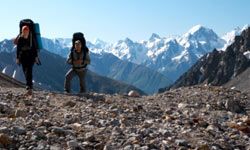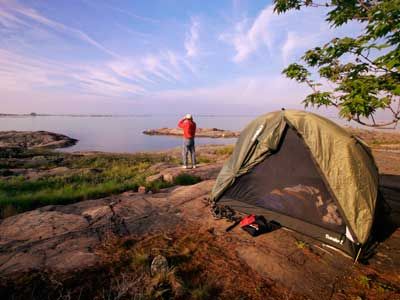"Wander here a whole summer, if you can," advised the renowned naturalist John Muir, referring to the Sierra Nevada Mountains of eastern California. The range, which runs 400 miles (644 kilometers) north to south, offers some of the most awesome sights on Earth, just as it did when Muir wrote about the region in 1901 [source: Muir].
Muir called the Sierra Nevada Mountains the "range of light," referencing the play of light on the exposed granite of the peaks [source: Wood]. After exploring much of the area following the Civil War, he made an effort to protect the region from development. In 1984, the United Nations declared Yosemite a World Heritage site, an area "of outstanding universal value from the point of view of science, conservation or natural beauty" [source: UNESCO].
Advertisement
But even if this history and international caché don't impress you, the Sierra Nevadas still offer plenty to entice even the most seasoned hiker:
- Three national parks, Yosemite, Sequoia and King's Canyon, offer famed sights like Half Dome, Bridalveil Falls and the General Grant Grove of giant trees.
- The vast Sierra National Forest and the pristine wilderness areas named for John Muir and Ansel Adams provide unlimited access to solitude amid nature's wonders.
- Extensive areas of bare alpine heights make for some of the most jaw-dropping scenery in the world.
- Dry, mild weather dominates the peak late-summer period.
- The highest mountain in the lower 48 states, Mount Whitney, is easily accessible to hikers.
For hikers, the variety of this region is one of its key attractions. On a single hike, you might encounter lush forests, crystalline lakes, high waterfalls and open granite outcroppings. The area's great for both the casual stroller and the inveterate rock climber -- you just need to know which trails to look for.
Advertisement




